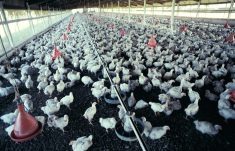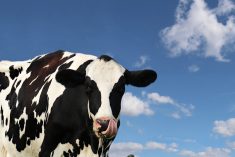I was on the edge of the conversation, waiting for the speaker at the ag-event-of-the-week to finish mingling so I could corner him for an interview.
His conversation with a few of the event attendees had turned to dairy. The speaker came from the U.S., where rules on the sale of raw milk for human consumption are looser. He expressed disbelief when told that Canada prohibits the practice.
The implication was that such rules are unnecessarily stringent. He said it amazed him that many dairy producers would refuse to drink unprocessed milk from their own farm.
Read Also

Why agriculture is Canada’s energy ace
Why isn’t agriculture getting more play in Canada’s quest for efficient, renewable energy production? It should be
As we spoke, I thought about how the Canadian Food Inspection Agency was working across several provinces to track the impacts of bovine tuberculosis infections found in Saskatchewan.
I’ve been thinking about that conversation a lot in recent weeks, ever since news broke that avian influenza had made the jump to dairy in the U.S.
As of April 19, eight states had cases of what the industry has now dubbed bovine influenza A virus. It’s a problem for agriculture that cattle producers and epidemiologists are watching closely on both sides of the border, as Jeff Melchior and Stew Slater report in this week’s front-page story.
It is not a human health crisis, although health experts are also watching the situation closely, as they would any virus that has shown capability to jump species. There’s been only one human case and conjunctivitis was the main symptom.
There are warnings that producers should boost biosecurity and that dairy workers should take pains to avoid infection vectors, but no one is talking about a crisis looming in the milk supply. Quite the opposite. Officials have repeatedly stressed that U.S. milk is safe.
The main reason? Milk packaged for human consumption and sold across state lines must be pasteurized. Officials are also doubling down on urgings to avoid raw milk, the sale of which is legal in some states.
In Canada, it’s a moot point. Health Canada gives room for raw milk cheeses with production processes that kill pathogens, but unprocessed or untreated milk is a no-go north of the border.
Canada enjoys some of the safest food in the world, particularly when it comes to milk, meat and poultry products. We have our food safety system, which includes rules sneered at by raw milk advocates, to thank for that.
In fact, when you think about food-borne illnesses that have slipped through the safety net to the grocery aisle, you’re far more likely to remember scares from contaminated lettuce or cantaloupe than animal products.
The regulations are one reason no one is worried about contracting tuberculosis through milk. As Geralyn Wichers noted in her fall 2023 deep dive on bovine tuberculosis testing, meat and dairy were vectors for the historic killer prior to medical advances. Management protocols for livestock and application of food safety systems removed it and other harmful pathogens from the value chain.
Raw milk advocates argue that veterinary control measures have removed the threat of pathogens like tuberculosis, so pasteurization is no longer necessary. The situation in the U.S. suggests otherwise.
Rules around milk treatment are not just about protecting people from known disease threats. They’re also about getting ahead of the ones waiting in the wings.
















